One of the most common reservations artists have with oil painting is the use of harsh chemicals like solvents and mediums. To a beginner, these additional supplies can seem overwhelming. Painting is hard enough without the added confusion of mediums and solvents.
But you do not need to use additional solvents and mediums in oil painting. I will show you how in this post.
- What Are Solvents and Mediums Used For?
- Option 1 – Palette Knife Painting
- Option 2 – Direct Painting (Alla Prima)
- Option 3 – Water Mixable Oils
- Option 4 – Try Odorless Solvent
- Additional Readings
- Want to Learn More?
- Thanks for Reading!
What Are Solvents and Mediums Used For?
Before I go any further, I will briefly discuss the purpose of solvents and mediums in oil painting.
Solvents are used to break down and thin oil paint. It increases the fluidity of the paint and makes it dry faster. But, the integrity of the paint is compromised to some extent because the solvent breaks down the oil which binds the pigment together.
Mediums generally refer to additional oil which you can add to the paint. Oil paint in a tube already comes with oil to bind the pigment together and by adding more oil you can increase the fluidity of the paint and slow the drying time. The paint also becomes more transparent. The most common medium in oil painting is linseed oil.
Tip: You can create your own balanced medium by mixing a solvent with an oil medium. This will increase the fluidity of the paint without changing the drying time as much.
Option 1 – Palette Knife Painting
With palette knife painting you do not need any solvents or mediums. It is preferable to use paint straight from the tube.
The benefits of palette knife painting are:
- You can create bold strokes of clean color.
- The strokes you get with a palette knife are unique and cannot be easily replicated with a brush.
- You can create very sharp edges to give your painting a rigid design. Tibor Nagy does this well.
- Palette knives are easy to clean – you just need a rag to wipe away the paint.
- You can quickly cover the canvas with paint.
The disadvantages are:
- You will use a lot of paint. Brushes are much more efficient than palette knives at applying paint to canvas.
- There is a sacrifice in intricate detail and overall accuracy.
I wrote more about palette knife painting in this post.
Below is a painting I currently have in the works. I did not use the palette knife for the whole painting, but I did make use of it for adding bold and rough strokes of color to imitate nature. The paint I used had no added solvents or mediums.

Option 2 – Direct Painting (Alla Prima)
If you paint using a direct method (alla prima) then solvents and mediums are not required, though they can help. This method of painting involves placing distinct strokes of color with the intention they will remain there in the finished painting.
“A stroke laid is a stroke stayed”, is a phrase commonly used by artists to describe direct painting.
Solvents and mediums are not necessary for direct painting as you do not need to worry as much about altering the drying time of your paint. It is more effective to use paint straight from the tube when paint is in its strongest form. As soon as you add solvents and mediums you start to compromise the integrity of the paint. On the other hand, if you are using a layering method of painting then solvents and mediums become more important as they give you better control over the drying time of the paint.
This is not to say you should avoid solvents or mediums when painting in a direct method, but they are not essential.
In practice, I often start a painting with thin washes of paint plus solvent to cover the canvas with color, but then I use paint straight from the tube for the rest of the painting.
Carolus-Duran was known for using a very direct painting method, though I am not sure if he used solvents or mediums. Interestingly, he taught the great John Singer Sargent.

Option 3 – Water Mixable Oils
I personally have not used water mixable oils but they are becoming a popular alternative to traditional oils. The idea of water mixable oils is that they handle like traditional oils but can be mixed with water.
I will do a separate review of water mixable oils in the near future. If you have used water mixable oils, let me know your thoughts on them.
Option 4 – Try Odorless Solvent
When I started using oils I used turpentine as my solvent. The smell was intense but it worked well at thinning the paint. Back then I was living with my parents and although they were happy to see me pick up painting again, they were not pleased with the toxic smell of the turpentine which flooded the house.
Oil painting became much more enjoyable once I moved too odorless solvent. It is not as strong as turpentine, but that does not seem to be an issue.

Additional Readings
Oil Painting – The Ultimate Guide For Beginners
9 Oil Painting Techniques For Beginners
How To Clean Your Oil Paint Brushes
Oil Painting Tips For Beginners
Oil Paint Drying Time And How You Can Manipulate it
Want to Learn More?
You might be interested in my Painting Academy course. I’ll walk you through the time-tested fundamentals of painting. It’s perfect for absolute beginner to intermediate painters.
Thanks for Reading!
I appreciate you taking the time to read this post and I hope you found it helpful. Feel free to share it with friends.
Happy painting!
Dan Scott

Draw Paint Academy

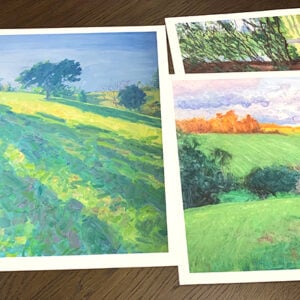
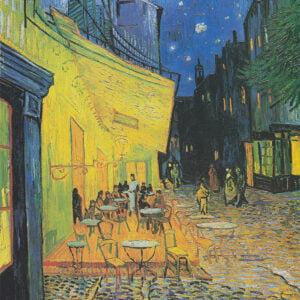
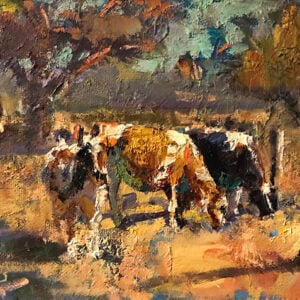
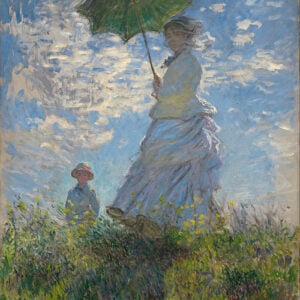
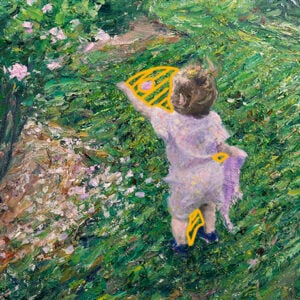
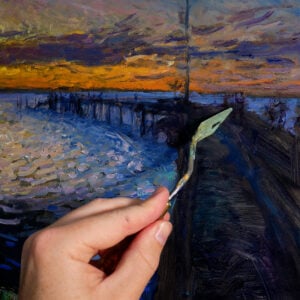
Great post. I use water mixable oils and love them. Sometimes winsor newtons are too thick, so I use their medium or some linseed oil. Lukas Is more consistent, although one I got was too runny. All and all, the smell is less and cleanup is easier. IMHO, easier with plain air. Depends on what you’re used to.
Very interesting thanks Chris!
Thanks to your tips and tricks, I progress in this field. I can draw, no problem there. But oil painting has a lot of mysteries for me. Without a teacher, or a mentor, it is challenging to learn the medium. You are a the best reference on the web. Thank you!
Really glad to here Irene!
I really enjoyed reading this as there is so many things to learn.Some times you still miss the reason why things are done and it is nice to understand the different out comes of painting. I am really enjoying your post Dan and love your painting above.
Thanks Lynn means a lot! Dan
Thank you for another very interesting and informative post! I use walnut oil to clean most of the paint out of my brushes, then finish up with odorless turpentine. Also, I have tried the water soluble oils and do not really care for them. The colors just don’t seem as rich and vibrant as regular oils. Perhaps I am not using them properly.
Thanks Toni! Interesting about the water mixable oils. That was what I figured but need to test them myself.
I’m late on this, but I only thin with water to block in. Then i use the modified linseed oil that’s available–only a small amount gives that nice oil sheen and luminosity to the finished painting. The water will cloud it. I think maybe manufacturers should have called them water-clean-up oils or something so folks wouldn’t use the water as a painting medium. When they had first come out years ago, I made that mistake and then gave them away when the results weren’t good. With kids and all that, it just wasn’t workable to use conventional oils, either. I started using gouache instead (and got completely ruined by the easy clean-up of those! teehee).
I don’t have a dedicated work space so can’t do the fumes and have cats so the toxics are right out to start with. I tried doing solvent-less oil painting using walnut oil. I used Murphy’s Oil Soap in water to clean the brushes at session end, and while they seemed clean (use synthetics as water just kills natural hairs) they were stiff and had no snap. I ended up using a lot of walnut oil which was kinda more spendy than I would like. Having done more research, I recently revisited them, and the water mixables are doing well for me in my situation now.
Thank you very much, very interesting
Thanks Flor
Yes this was helpful. Thank you
Thanks Janet
Hi I love reading your posts! Being new to oil painting I still feel a bit confused when to use linseed oil and when to use a solvent. Is the odorless solvent just used in the beginning to determine lights and darks and then slowly you add more linseed oil less solvent, to thin paints? Or slowly stop with the solvent and don’t use linseed oil? Sorry, help!
Thanks Erin!
The answer depends on how you like to paint. I like to start a painting with thin washes, so I use solvent to thin the paint. The solvent also makes it dry faster. After that, I do not use any solvent or medium. The time to use linseed oil would be later in the painting when you want the paint to dry slower.
If you want to chat over it more, feel free to email me.
Dan
Hi, I am fairly new to painting and I use water mixable oils. I look forward to reading your post regarding W.M.Oils in the future. Enjoying your posts and learning along the way.
Thanks Diana. I will order some water mixable oils shortly! Dan
Did you know there’s a medium which makes traditional oil paints water soluble? I’ve just come across it – Schmincke Medium W – I’d be interested to know if anyone’s tried it. I think the advantage is that you can use any of your existing colours, whereas my understanding is that the water soluble oil paints are still quite limited in their range of colours. Obviously, it also means you don’t have to invest in a whole new set of paints!
This is an interesting topic. I’ve mostly painted in acrylics because of the solvent hassle with oils. Recently, I began to experiment with water mixable oils and so far it’s been a positive experience. It takes a little time to get used to them and I learned they handle differently depending on the brand. I just have to keep in mind that water mixable oils are NOT water-based paint, but true oil paint with an additive that enables them to mix and be cleaned with water. I’ll look forward to your opinion of this paint, Dan.
Baby oil, and Dove.
Heck yeah this is exactly what I came here for… I was wondering if anybody else ever used baby oil and wood soap. works for me…wasn’t sure if it was a “proper” thing to do. Now I know it’s close enough…thanks again!
Thank you for your very helpful instruction and posts. I use water mixable oil paint. It should not be thinned with water as it is still oil paint. it cleans up with soap and water and they make modified medium for water mixable oil paint. Lukas Berlin and Mont Marte h2o are both nice and creamy like regular oil paint. If you follow your painting without solvents instructions they will preform well for you. Use the medium as you would other mediums, last, so you follow the fat over lean rule. Barb
Thanks for this. As for the request for comments on water mixables… I wanted to paint while on a family visit, to which we flew. So I packed water mixable oils in my checked luggage, and was thus able to paint at my destination without having to worry about solvents. They took a few minutes to get used to, but I enjoyed them and it just felt like painting with oils (which it was!). They also take a while to dry — I tried wrapping my three-day old oil painting (unfinished, thus I wanted to bring it home to finish) in waxed paper, and putting it in my suitcase. Some of the wetter paint stuck to the waxed paper, so I guess that’s not a great idea. Open to suggestions. I can sand that area and repaint but maybe there is a better way to transport.
Do you know if water soluble oil paints are safe in household sink. Will it damage the pipes?
I use a plastic glass with a small amount of water for rinsing my brushes after I have wiped them off with a paper towel. I soak up the water/oil paint with the paper towels and throw them in trash. I also rinse them in a glass jar that I keep water and murphy’s oil soap to rinse again before I wash them. I wash the mostly clean brushes with soap and water in the sink like I would for regular oil paint. I have not had any problems with my pipes and I think it is better for the environment this way.
Hi Don,
I have switched to the water soluble oil paints for medical reasons.
I find there are many qualities and not found here in only one art store handling only painting supplies. The nationwide stores here do not at all.
Some have more oil substance than others. I’ve found one that strikes a good balance.